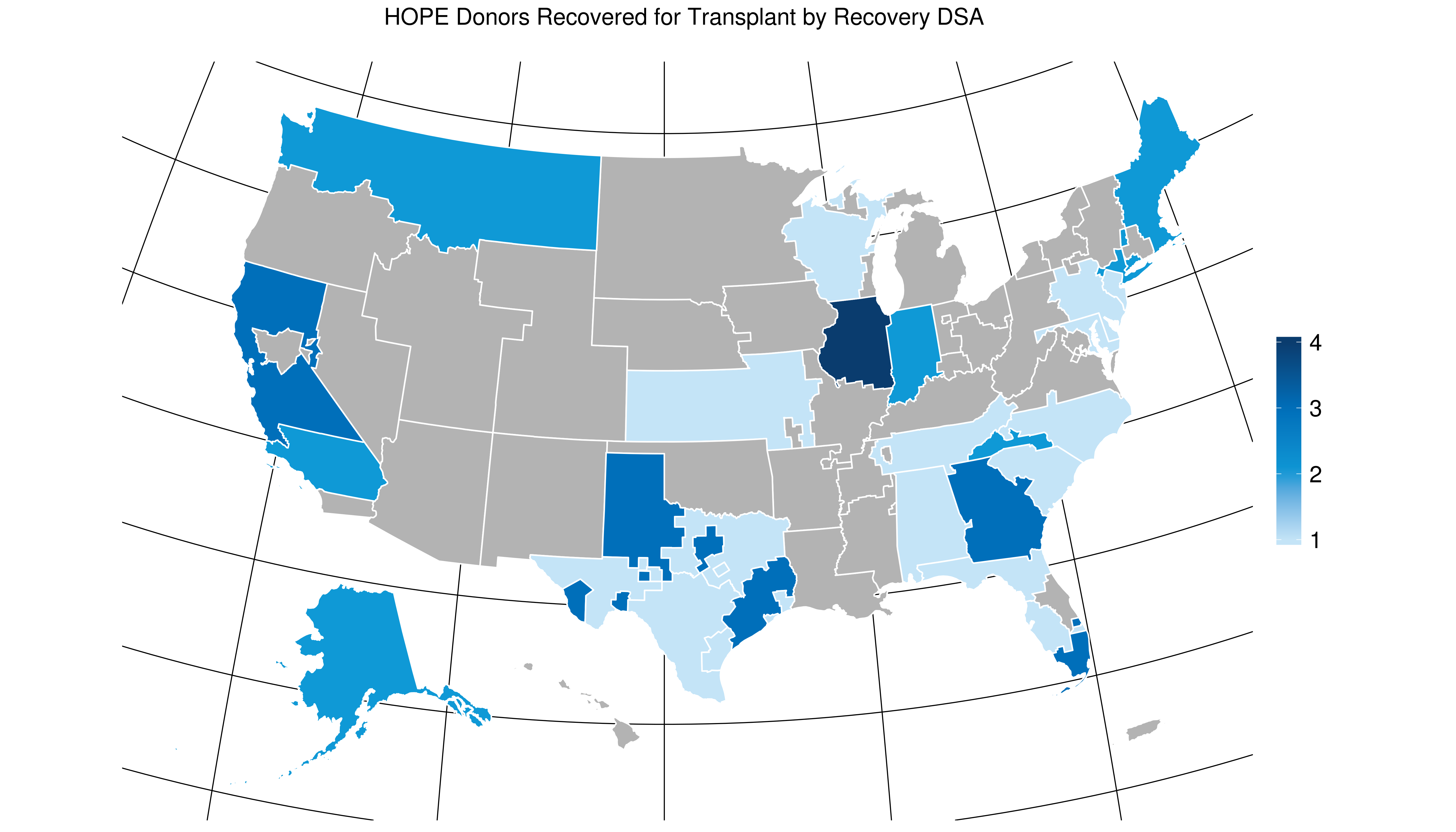National Landscape of Donors Allocated through the Hope Act in the United States
1Research, United Network for Organ Sharing, Richmond, VA, 2United Network for Organ Sharing, Richmond, VA
Meeting: 2019 American Transplant Congress
Abstract number: D222
Session Information
Session Name: Poster Session D: Non-Organ Specific: Public Policy & Allocation
Session Type: Poster Session
Date: Tuesday, June 4, 2019
Session Time: 6:00pm-7:00pm
 Presentation Time: 6:00pm-7:00pm
Presentation Time: 6:00pm-7:00pm
Location: Hall C & D
*Purpose: To address the shortage of donor organs and to increase transplantation opportunities for HIV+ recipients, the HIV Organ Policy Equity (HOPE) Act was enacted on 11/21/2013, and the Secretary of HHS published the final research criteria and revised the OPTN Final Rule on 11/23/2015. This legislation allows for the transplantation of organs from HIV+ donors into HIV+ recipients in the United States only as clinical research.
*Methods: An analysis of the OPTN database was performed to examine the number and characteristics of kidney (KI) and/or liver (LI) deceased donors from 1/1/2016-7/31/2018. Donors were considered HIV+ if any of the following HIV test results collected by the OPTN were reported with a positive result: HIV antibody, HIV NAT, or HIV Ag/Ab combination test.
*Results: 41 HOPE donors were recovered (median KDPI: 39%, IQR 27%-66%) from 24 OPOs geographically dispersed throughout the United States during the 31 month study period (10 KI-alone donors, 5 LI-alone donors). This is a small proportion (0.09%) of all donors recovered (N = 44,177) during the same time period.
Among 36 KI donors, 44% were PHS Increased Risk (PHSIR), 6% were co-infected with HCV and/or 11% with HBV, and the median age was 33 years (IQR 23-46). The majority of KI donors were male (75%), White or Black (44% each), and blood type O or A (44%, 42% respectively). Among 26 LI donors, 54% donors were PHSIR, 8% were co-infected with HCV and/or 19% with HBV, and the median age was 34 years (IQR 26-44). The majority of LI donors were male (81%), Black (42%), and blood type O (58%). Among all HOPE Act donors, 36 had organs transplanted (KI discard rate: 28%, LI discard rate: 4%). Some HOPE donors could be HIV false positive donors but that isn’t ascertainable with OPTN data alone.
*Conclusions: The number of HOPE Act donors remains low. Currently, the OPTN limits HOPE Act donors to the procurement of only KIs and LIs. KIs from HIV+ donors were discarded at a higher rate than that seen for non-HIV+ KIs, despite being from younger donors with lower KDPI values, suggesting the possibility of the presence of donor co-morbidities not typically encountered in non-HIV+ donors.
To cite this abstract in AMA style:
Wilk AR, Hunter R, McBride MA, Klassen DK. National Landscape of Donors Allocated through the Hope Act in the United States [abstract]. Am J Transplant. 2019; 19 (suppl 3). https://atcmeetingabstracts.com/abstract/national-landscape-of-donors-allocated-through-the-hope-act-in-the-united-states/. Accessed December 24, 2025.« Back to 2019 American Transplant Congress

